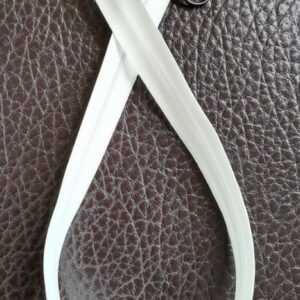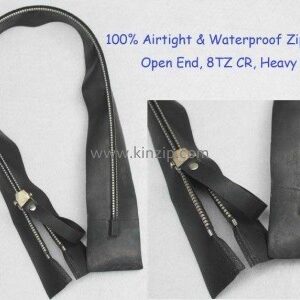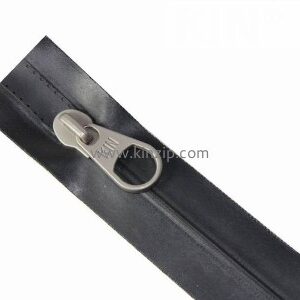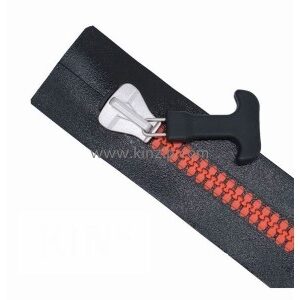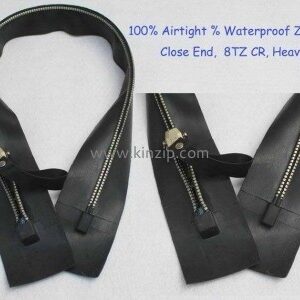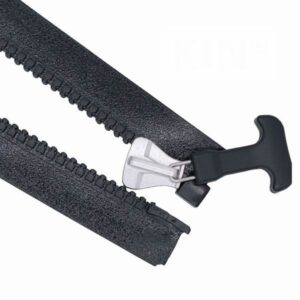How to install waterproof zippers and airtight zipper
PROCESS OF INSTALLING: The front and the back side of the zipper are ready to be installed and applied on fabric base or with a POLYURETHANE and PVC coating. Both sides are easily glued to a NEOPRENE support or other Rubber Bases.
The following processes are recommended:
GLUING: glues function easily and perfectly. Recommend use black witch Glue for neoprene.
SEWING ON: Stitches must be covered with compatible coating to make the whole set waterproof.
For 8 TZ CR airtight zipper, recommend use the following two methods to connect it with your products.
1. Gluing: Metal water/air tight zippers can be glued into applications with adhesives compatible with the zipper tape and substrate material.
Typically, neoprene based adhesives are used with CR tape zippers when neoprene fabric is used in the application. The zipper with PU or PVC tapes will require different adhesives depending on the application material. Testing the compatibility of the adhesive, application material, and the zipper is strongly recommended.
2. Sewing & seam sealing: If a zipper is sewn into an application, the sewn seam must be covered with seam seal tape to prevent liquid or air leaks.
For 5# & 8# TPU waterproof sealed zipper, recommend use the following two methods to connect it with your products.
1. RF welding: RF Welding (Radio Frequency, Dielectric, High Frequency Welding) is a process in which similar polymer materials are bonded together using radio waves. Zippers made of PVC and TPU materials are used in applications where the zippers are attached to similar materials using RF welding techniques. The RF machine settings are dependent on the type and thickness of the material used in the application. Any welding process or substrate material must be tested for compatibility with the zipper. The zipper is typically welded to the inside of the garment and seam sealed on all edges to prevent liquid or air penetration.
2. Hot welding: Hot air can be used to fuse two similar or compatible materials together. A zipper made from TPU tape is attached to materials with hot air welding in some applications. The materials used and machinery used must be tested with the zipper. An additional hot melt adhesive may be required as a carrier between the zipper and the application material. The zipper is typically welded to the inside of a garment and seam sealed on the edge to prevent liquid or air penetration. Heat above 70°C could possibly damage the molded top, bottom stops or chain. Care should be taken to prevent the movement of the heated zipper or damage may occur to the molded top or bottom stops.

